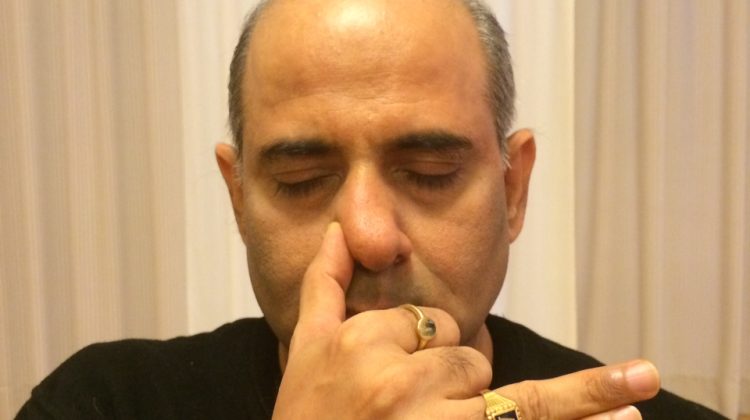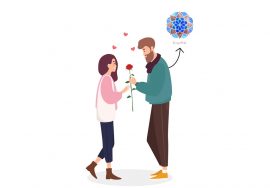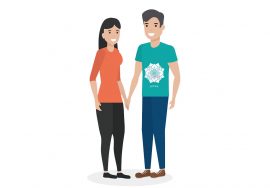
AYURVEDA & PRANAYAMA
Ayurveda means “Science of Life”. Though an ancient science, it is timeless, hence it can be practically applied even today to maintain good health & treat ailments.
Pranayama is the 5th limb (anga) of Ashtanga (8 limb) Yoga. Pranayama follows Asanas (postures) and is followed by Dharana (concentration or withdrawal of mind & senses from the sense objects and focusing on a meditative entity).
Pranayama means regulating the flow of Prana, the life force by practicing some breathing techniques. According to Ashtanga Yoga, there are 8 such major breathing techniques viz. Anulom – Vilom (naadi shodhan), Ujjayi, Kapala bhaati, Bhastrika, Surya bhedhan, Chandra bhedhan, Shitali, & Sheetkari; and 4 steps of Pranayama viz. “Puraka” (Inhalation), “ Antarik Kumbhaka” (Retention or holding the breath in), “Rechaka” (Exhalation), and “Bahri or Kevala Kumbhaka” (Holding the breath out).
Also, it is very important to apply specific “Bandas” (Locks) viz. “Jalandhar Bandha” (the chin lock), “Mula Bandha” (the basal lock), and “Udyan Bandha” (the abdominal lock).
All of these techniques are very effective in helping to develop a balance amongst the 5 main Vayus (airs) in the human system.
These 5 Vayus are:- Prana Vayu, Udana Vayu, Apana Vayu, Samana Vayu, Vyana Vayu. Maintaining a good balance amongst these 5 main Vayus is essential in order to regulate the flow of Prana (energy or “chi”) throughout our system.
The general misconception is that all the 8 breathing techniques are equally beneficial for everyone. But Ayurveda does not support that concept. According to Ayurveda, each individual is unique, so the requirements of each individual are also specific.
According to Ayurveda, one has to be careful and follow certain rules/conditions while doing the breathing techniques, otherwise, these techniques can prove to be harmful and cause serious ailments eg. blood pressure, weakness of the heart, insomnia, headache, skin diseases, etc…
So what are the conditions to be followed, and precautions to be observed in order to obtain maximum benefit from practicing these breathing techniques and enjoy good health at a physical, emotional, mental, intellectual, and spiritual level?
Ayurveda says the specific conditions one should observe are:
A. Choose the breathing technique according to one’s own constitution i.e. Vata, Pitta, or Kapha.
Vata, Pitta & Kapha individuals can comfortably practice the following breathing techniques throughout the year and enjoy the beneficial effects of these techniques:
- Anulom – Vilom Pranayam
- Ujjayi Pranayam
- Kapalabhati Pranayam
The following breathing exercises should be avoided by Vata & Kapha people during winter & and in the evening time because these techniques will aggravate Vata and increase Kapha due to their cooling effect on the body. This can cause cold, cough, water retention in the body, involuntary or uncontrolled passing of urine, twitching of limbs, muscle spasms, poor blood circulation, etc…
- Shitali Pranayam
- Sheetkari Pranayam
- Chandrabhedhan Pranayam
Vata & Pitta individuals should avoid the following breathing techniques during summer & in the daytime:
- Bhastrika Pranayam
- Suryabhedhana Pranayam
This is because the above techniques tremendously increase heat in the body, resulting in the Vata (Air) & Pitta (Fire) elements in the system becoming aggravated. When these doshas are aggravated, one may feel dizzy due to an increase in blood pressure. One may also experience a nose bleeds, burning sensation in the eyes, acidity, hypertension, bleeding while passing urine and/or stool, bleeding piles, etc…
With regard to the 4 steps of Pranayama, Vata people have to be very careful especially while holding the breath. They should follow the ratio of 2:4:6:2 (Puraka for 2 counts, Antarik Kumbhaka for 4 counts, Rechaka for 6 counts, and Bahrai/Kevala Kumbhaka for 2 counts) in the beginning, and after the proper practice of 42 days at a stretch, they can follow the ratio of 4:6:8:4 and later can increase to 6:8:6:4.
People with a predominantly Pitta dosha should start with the ratio of 4:6:8:2, after 42 days they can follow the ratio of 6:8:12:4.
And people belonging to a Kapha constitution should start with the ratio of 4:8:10:2 for 42 days, and then follow the ratio of 6:10:12:6.
Regarding the “Bandhas” (the locks), everyone should apply the locks in the following manner to avoid any harmful effect on the heart and the 7 “Chakras” (the energy centers) in our system :
Apply “Jalandhar bandha” (the chin lock) and “Mula bandha” (the basal lock) while “Antarik Kumbhaka” (holding the breath in) after “Puraka” (inhalation). Though in the beginning, it may be a bit difficult to apply “Mula bandha” (the basal lock), with determination and regular practice, within a few days it will become possible to do it comfortably.
Apply “Udyan bandha” (the abdominal lock) and also “Mula bandha” (the basal lock) after “Rechaka” (exhalation) and while “Bahri/Kevala Kumbhaka”.
B. Follow a specific diet & lifestyle pattern in conjunction with practicing the breathing techniques.
It is very important to follow a specific diet and lifestyle pattern when we are practicing breathing exercises.
Those of us who fall into either the Vata or Pitta category should eat more fresh dairy products eg milk, butter, clarified butter (ghee) and consume more fresh vegetable soup, while beans, lentils, and pulses should be eaten in moderate quantities, and deep-fried food, eggplants, liquor, vinegar, canned food & pungent food should be completely avoided. It is also important that they stick to a regular bedtime of no later than 11:00 pm.
Individuals belonging to the Kapha category should eat more lentils and pulses, beans, and green leafy vegetables, while dairy products should only be consumed in moderate quantities.
Deep-fried food, split pea flour, eggplants, eggs, meat products, onions, garlic, liquor, vinegar, canned food & pungent food should be completely avoided by everyone, in general, to derive maximum benefits from doing pranayam.
GENERAL CONDITIONS:
Do’s
- The Corpse pose should be done at least 5 minutes before doing Pranayama.
- Pranayam should be done either early in the morning, or in the early evening on an empty stomach. There should be a gap of at least 3.5 – 4 hours between eating a meal and doing Pranayama.
- One should strictly observe a vegetarian diet while practicing Pranayama in order to get the maximum benefits.
- As far as possible, one should practice Pranayama in a natural environment.
Don’ts
- Pranayama should not be practiced when one is having a fever, diarrhea, or any serious stomach ailment.
- Pranayama should not be done immediately after doing vigorous exercises.
- Do not practice pranayama under extreme weather conditions such as strong sunshine or strong winds, or in areas where there are strong odors such as petroleum, gas fumes, etc…
To book an online appointment at Ayuryoga, with our Ayurveda/Yoga Expert Mr. Vinod Sharma Hong Kong please click here.












